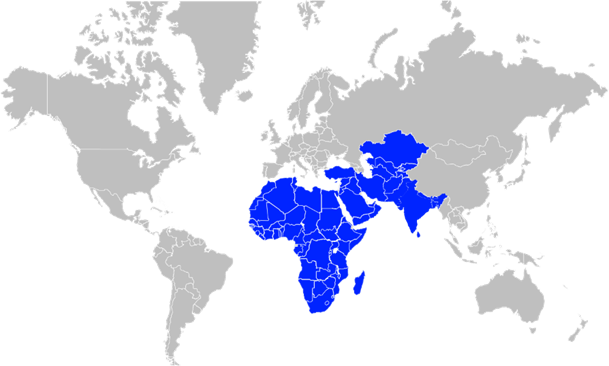Get in touch
-
Mark Thomtonmark.thomton@woodmac.com
+1 630 881 6885 -
Hla Myat Monhla.myatmon@woodmac.com
+65 8533 8860 -
Chris Bobachris.boba@woodmac.com
+44 7408 841129 -
Angélica Juárezangelica.juarez@woodmac.com
+5256 4171 1980 -
BIG PartnershipWoodMac@BigPartnership.co.uk
UK-based PR agency
Creation of minerals “Super Region” could make Africa, Middle East and South Asia global leaders in energy transition
Wood Mackenzie white paper offers pathway to tap into US $400bn minerals capex
3 minute read
The creation of a minerals “Super Region” comprising Africa, the Middle East, Central Asia and South Asia would make a huge contribution to a successful energy transition according to a new white paper launched by Wood Mackenzie at the Future Minerals Forum being held in Riyadh.
The white paper, ‘How can the Super Region enable the energy transition?’ was written in conjunction with the Future Minerals Forum and offers a blueprint for how the Super Region can become a global force in the production of minerals and related clean energy technologies.
Wood Mackenzie estimates that approximately US $400 billion in capital expenditure is required for mining, refining, and smelting of critical minerals by 2030 to bridge the supply-demand gap and limit global temperature increases to 1.5°C above pre-industrial levels.
Map of proposed minerals Super Region

Source: Wood Mackenzie
“The creation of a minerals Super Region offers a unique opportunity for the region’s countries to collaborate and leverage existing resources and expertise,” says co-author of the whitepaper Julian Kettle, Senior Vice President of Research at Wood Mackenzie. “The region can become a global leader in production of minerals and related clean energy technologies and to become a counterweight to China’s dominance of the energy transition ecosystem.”
The white paper adds that unlocking the Super Region’s potential will require uniting four key variables: resources, capital, demand, and capabilities.
“If the Super Region can collaborate across all four variables, it can become a formidable metals and mining powerhouse, driving the energy transition and economic development,” Kettle says.
Africa offers unrivalled mineral resources
The white paper states that in terms of the minerals essential for a successful energy transition Africa is a clear global leader. With 79% of global cobalt reserves, 44% of global manganese and 21% of global graphite as well as sizeable resources of many other minerals including copper and tin, the continent’s potential is unrivalled.
However, Africa’s immature financial ecosystem, underdeveloped infrastructure and a reluctance to invest in many African countries, means that the continent has provided strong headwinds.
The Middle East provides the finances and experience
The Middle East has the potential to play a pivotal role in the creation and long-term success of the Super Region and could offer the solution to some of the issues in Africa according to the white paper. The region hosts sovereign wealth funds that control trillions of dollars and have extensive experience investing abroad in physical infrastructure and, in some instances, mining. This expertise can be leveraged to invest in mineral supply chains at home and throughout the Super Region.
The area is also, along with Sub-Saharan Africa, one of the most naturally endowed areas for solar power production.
However, the report adds that while the Middle East has access to capital and mineral resources, they lack sizable reserves and production.
“The Middle East currently produces 35 percent of global oil but does not produce meaningful quantities of cobalt, nickel, lithium, nor graphite,” Sum says.
South Asia offers huge demand potential
South Asia lacks the financial clout of the Middle East and the abundant natural resources of Africa, but as the most heavily populated region in the world it offers huge potential as the Super Region’s demand and manufacturing hub.
The white paper states that India is due to add 152 gigawatts (GW) of solar capacity by 2020 and battery electric vehicle (EV) and plug-in hybrid electric sales in India could also amount to over 19 million vehicles by 2050, fuelling substantial growth in mineral demand.
“South Asia’s emergence as a centre of demand, in addition to its competitive labour force, low capital costs, and access to ports, make it a logical destination for midstream and downstream operations in mineral supply chains,” Kettle concludes.
Editor’s Notes
- ‘How can the Super Region enable the energy transition?’ has been written in conjunction with the Future Minerals Forum. To read the full version of the white paper, please click here.
- The Future Minerals Forum is taking place in Riyadh on 10-11 January. For more details, please click here.





